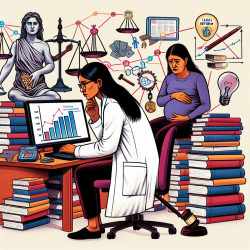The Alaska State Systemic Improvement Plan (SSIP) is a strategic initiative aimed at enhancing the educational outcomes for students with disabilities. The Theory of Action underpins this plan, offering a structured rationale for implementing a cohesive set of improvement strategies that will empower local education agencies (LEAs) and achieve significant improvements in the State Identified Measurable Result (SiMR).
But what does this all mean in practice? Let’s break it down:
- Stakeholder Engagement: The Alaska Department of Education and Early Development (DEED) collaborates with various stakeholders to analyze data from State Performance Plans (SPP)/Annual Performance Reports (APR) indicators, 618 data collections, and other relevant sources. This data-driven approach helps identify root causes of low performance and shapes the SiMR.
- Improvement Strategies: Based on the data analysis, DEED identifies necessary improvement strategies that target different levels of the education system, including state education agency (SEA) strategies, school strategies, student strategies, and community strategies.
The Theory of Action posits that by fully implementing these strategies, meaningful progress can be achieved in the SiMR. Here’s how each strategy contributes to the overall goal:
- State Collaboration: If state agencies collaborate effectively, their combined capacity to support schools will increase.
- Capacity Building: By increasing the capacity of teachers and administrators, educational requirements and interventions can be implemented more faithfully.
- Student Support: When students receive appropriate instruction and interventions, their graduation rates are likely to improve.
- Community Engagement: Building strong relationships between schools and communities can motivate students to stay in school and graduate.
Each strategy undergoes rapid cycles of improvement known as Plan Do Study Act (PDSA) cycles. These cycles involve:
- Planning: Developing a plan to test the improvement strategy.
- Doing: Implementing the plan on a small scale.
- Studying: Analyzing the results to understand the impact.
- Acting: Making necessary adjustments before full-scale implementation.
The continuous improvement through PDSA cycles ensures that each strategy is fine-tuned and effective. Data from these cycles are reviewed to assess whether schools' capacity to improve graduation rates for students with disabilities has increased. The findings are then presented to stakeholders for further evaluation and refinement of strategies.
Ultimately, the goal is to create a sustainable system where each component—from state agencies to community partnerships—works in harmony to support students with disabilities, leading to higher graduation rates and better educational outcomes.
For more information, please follow this link.










